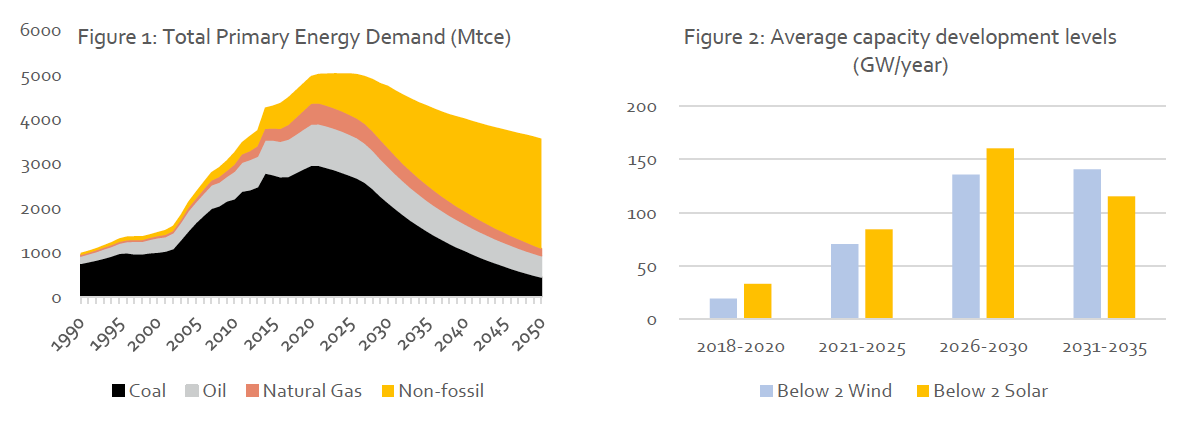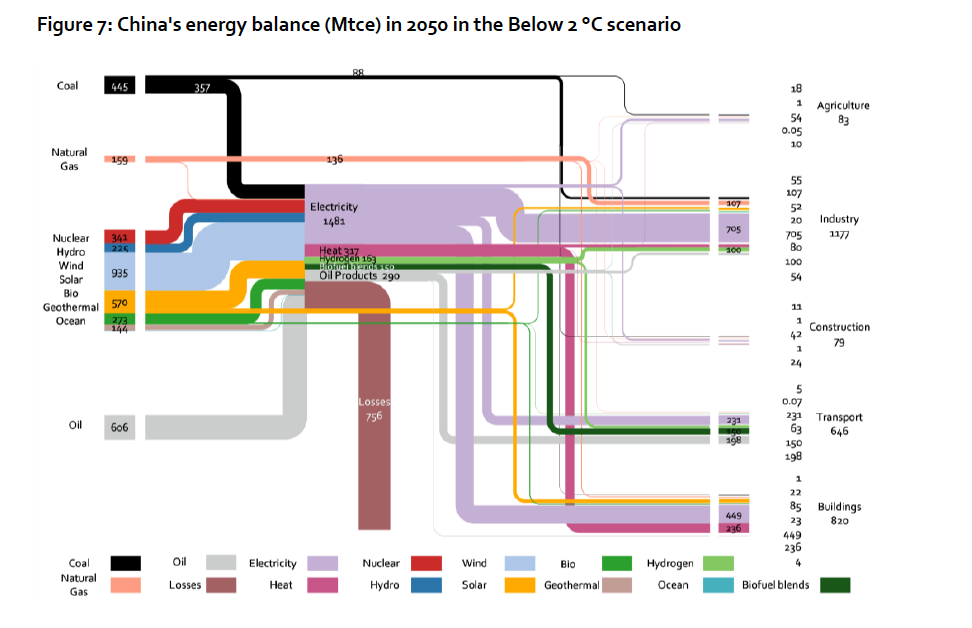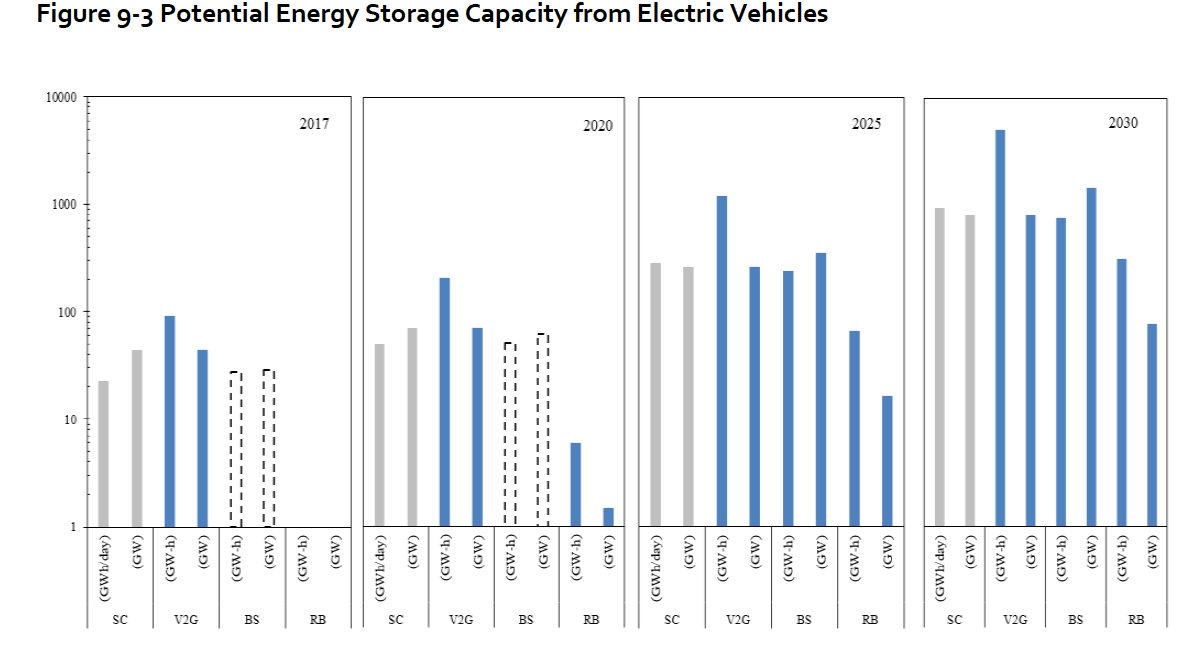“The single most important step now is to reduce coal consumption in China,” state the authors of the 2018 CREO, which has been published today on the sidelines of COP 24 in Katowice, Poland. Its key recommendations are simple: rapidly phase out coal while equally rapidly ramping up renewables; and introduce an efficient CO2 pricing system.
The goal of CREO is to set out in detail the development guidelines in the Chinese Government’s 13th five year plan. While previous plans have placed coal and oil at the forefront of the country’s energy strategy with renewables a mere “add-on”, this time it is different.
“The 13th Five-Year plan changed this development trajectory,” state CREO’s authors. Indeed, for the first time, it imagines a future where renewables underpin the country’s energy landscape, with policies and frameworks designed for their integration, while the dependence on fossil fuels, and coal in particular, lessens significantly.
While this is heartening, advocacy and research group, Coalswarm, which claims to have information on 13,000 existing and proposed coal plants worldwide via its Global Coal Plant Tracker, said in September that satellite imagery shows China is on track to add 259 GW of new coal-fired capacity to its grid. When fully commissioned, they will reportedly represent the equivalent of the total coal-fired capacity in the United States.
Anyhow, back to the matter at hand. CREO envisages two scenarios for the Chinese energy sector: (i) the Stated Policies Scenario, which assumes “full and vigorous” implementation of the current and stated policies; and (ii) the Below 2 °C Scenario, which goes further in the reduction of CO2 emissions to support the achievement of the Paris Agreement goals.
The purpose of this, write the authors, is to “identify gaps between today’s policies and the 2050 vision, and how they can be bridged by enhanced policies, targets, and measures.”
Utopia
Under the Below 2 °C Scenario, China reaches peak fossil fuel utilization in 2020, while usage steadily declines towards 2035. This is based on a rapid phasing out of coal, and the electrification of industry and transport, which will “slow, and then halt, growth in both its oil consumption and imports.”
 Concurrently, solar and wind capacities are rapidly rolled out over the coming decade, with new annual solar PV installations reaching between 80 and 160 GW, and wind, between 70 and 140 GW. By 2050, they become the “core” of China’s energy system, with dependence on fossil fuels declining to 30%.
Concurrently, solar and wind capacities are rapidly rolled out over the coming decade, with new annual solar PV installations reaching between 80 and 160 GW, and wind, between 70 and 140 GW. By 2050, they become the “core” of China’s energy system, with dependence on fossil fuels declining to 30%.
This development of renewables will boost macroeconomic development, say the authors, with the period between 2025 and 2035 seeing higher demand for employment in direct and indirect renewable energy sectors. “This positive effect is greater than the negative effects related to a decrease in employment in fossil energy such as coal and thermal power generation,” they write.
They continue, “Falling costs for renewable energy technologies will increase the operating efficiency of the energy industry. This creates development space for the provision of value-added services such as energy information and data analysis based on basic energy services, distributed energy, energy production and consumption (prosumer) services, energy storage, and EV charging.”
Furthermore, the country’s primary energy consumption in 2050 is just 80% of that of 2017, while economic gross domestic product (GDP) quadruples and energy intensity improves greatly.
“Due to continued cost reductions in renewable energy technologies and the gradual retirement of uneconomical assets, it is possible to supply electricity at lower cost than today,” write the authors. This statement is true for both of its scenarios, they say.
Business as usual
The Stated Policies scenario also sees China’s energy sector transitioning towards renewables, albeit at a much slower pace, and with less ambition to reduce dependence on coal and oil. Indeed, the latter would represent around 45% of the energy market in 2050, compared to the 30% projected in the below 2°C scenario.
Reflecting its weight in the current list of policy priorities, natural gas also plays a much larger role, increasing to 15% of total primary energy consumption.
Solar specifics
Looking at CREO’s projections for solar in more detail, the authors state that under the Stated Policies Scenario, China will see the large-scale development of distributed PV increase and the construction of central PV systems slowing.
By 2035, the installed capacity of solar PV will reach 1,494 GW, while power generation will hit 1,858 TWh, 71% of which will come from distributed PV, say the authors. By 2050, this will exceed 2,165 GW, and 2,694 TWh.
Under the Below 2°C scenario, the authors forecast that installed PV capacity will reach 2,000 GW, and produce 2,480 TWh by 2035; and 2,836 GW and 3,524 TWh by 2050.
Popular content
“… both scenarios anticipate a high proportion of solar PV, improved solar cost and efficiency, advances in grid technology and storage, and expanded transmission capacity,” write the authors.
By the end of 2017, China installed just under 130 GW of solar PV, 100 GW of which is central and 29.66 GW of which is distributed.
Excellent electric
EVs also have a leading role to play, particularly when it comes to storage. According to CREO data, China sold 777,000 electrified vehicles in 2017, including all-electric and plug-in hybrid vehicles, thus comprising over half of all global sales. By this September, 730,000 new energy vehicles were sold, representing an 80% year on year increase.
“Through such methods as orderly charging, vehicle-to-Grid (V2G), battery swapping, and decommissioned battery energy storage, large amounts of electric vehicles could be used as distributed energy storage systems providing considerable flexibility resources for the power system, thereby effectively improving the power system’s ability to absorb variable renewable energy sources,” write the authors.
By 2050 and under its Below 2°C Scenario, there will be 400 million EVs on China’s roads with a battery capacity of over 30 TWh.
Overall, energy storage will play a critical role in the country’s energy transition, particularly as wholesale spot markets evolve due to the higher penetrations of wind and solar. “Such markets will see declining prices for energy, but rising prices for balancing and ancillary services, accentuating the value of storage of all kinds,” continue the authors.
How to get there
There are several recommendations on how to achieve the most ambitious of the CREO’s goals. They include putting a complete stop to new coal-fired power plants, and reducing the use of existing coal by sectoral rebalancing and electrification.
To reduce oil dependence, higher deployment of electric vehicles is necessary, as is the roll out of “significantly higher” levels of solar and wind. Barriers to renewables also need to be removed, with proper incentives for developers and investors.
This all needs to be supported by the individual provinces, which currently depend heavily on coal mining, and strategies for growing electrification measures in industry and heating.
RE incentives
In terms of supporting such a rapid roll out of renewables, CREO says that shifting to an auction based system for large-scale could be effective, providing “key players with a more central role in deployment and reduce the need for a continuation of feed-in tariffs.”
Going forward, a focus on market prices is necessary, with renewables participating in market trading in financial, day-ahead, intraday, and real-time balancing markets, as well as providing other ancillary services.
“The way renewables are considered in the market design, can significantly affect their profitability and exposure to market and regulatory risks. A balance should be struck to ensure that the market incentives are there to motivate efficient deployment and operation from a system perspective, while not impeding the energy transition by overburdening RE projects with risks, which translate into higher financing costs and prolong renewable energy technologies reliance on subsidies,” write the authors.
Seeking solutions
“China faces similar challenges as Germany when it comes to converting its energy system, including the phase-out of coal-fired power generation and the associated structural change,” says dena CEO Andreas Kuhlmann. “However, the CREO scenarios are encouraging that a renewable, low-carbon future is attainable and economically realistic. Germany should seek solutions together with China, because climate change is a global challenge for humanity. ”
This is the third CREO published by the China National Renewable Energy Center (CNREC) and the State Research Institute Energy Reform Institute (ERI). German Energy Agency (dena), the Deutsche Gesellschaft für Internationale Zusammenarbeit (GIZ) and other institutes, think tanks and universities from China, Germany, Denmark and the USA helped in its preparation.
Yesterday, pv magazine published the recommendations by dena, which included switching to an auction-based systems for renewables.
Meanwhile in an equally buoyant report also released this week at COP 24, by the Energy Watch Group and LUT University, and funded by Deutsche Bundesstiftung Umwelt, stated that it is not only possible for Europe to transition to a world powered 100% by renewables by 2050, but that it would create more jobs and be more cost effective than the present fossil fuel-led system. Again, solar played a central role in this vision.
This content is protected by copyright and may not be reused. If you want to cooperate with us and would like to reuse some of our content, please contact: editors@pv-magazine.com.






The 2 degrees scenario for China looks to be pie-in-the-sky. Just look at figure 1: most coal-fired plants have been connected 2005-2022. It is expected that almost all of it will be out of service by 2050. Therefore the 2 degrees scenario expects the average Chinese coal-fired power station to be retired when 20 years old, against a usual productive life of 50-60 years. While possible, this is unlikely.
Worse is India, with its massive ongoing coal-fired power station building program.